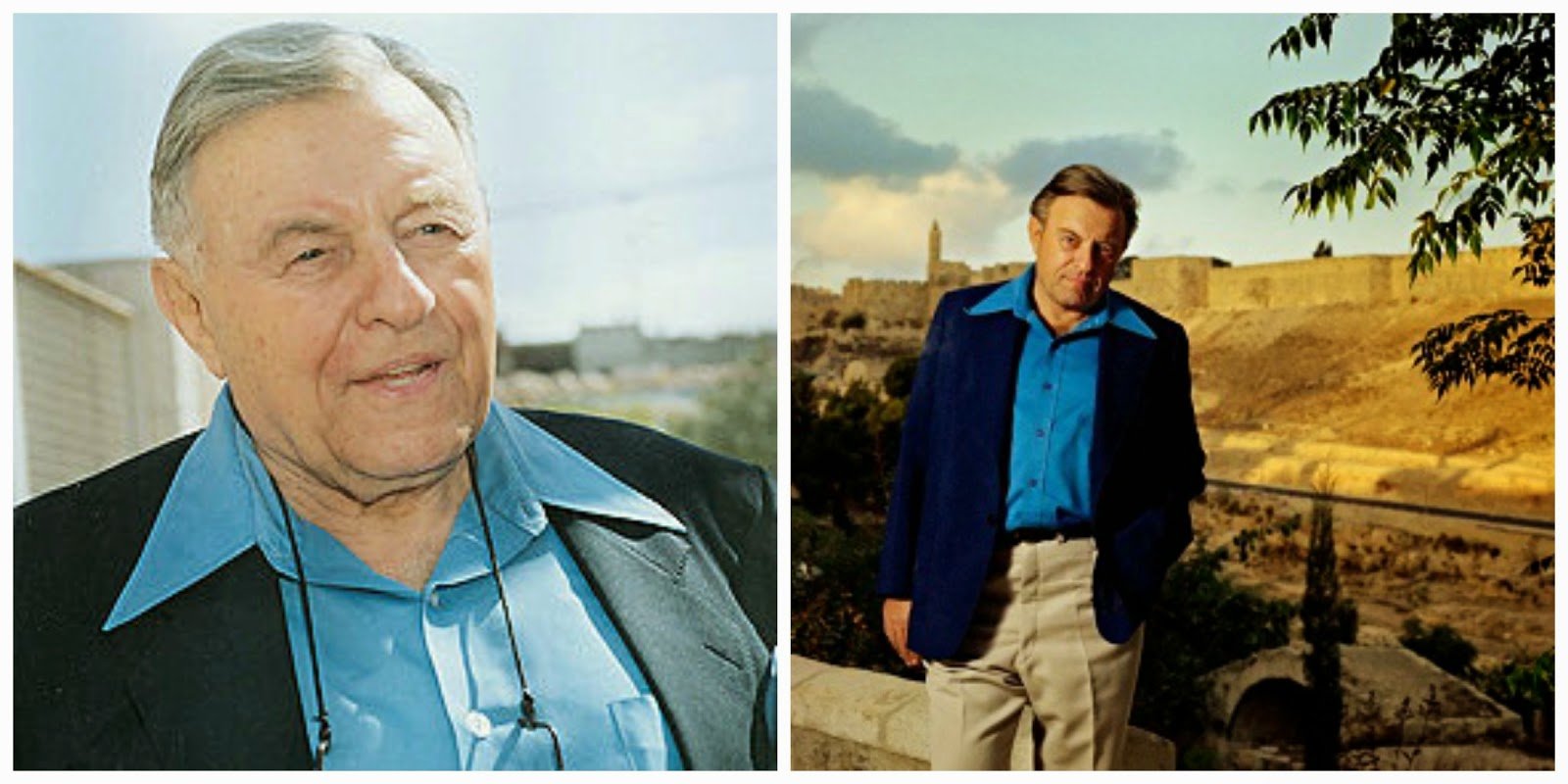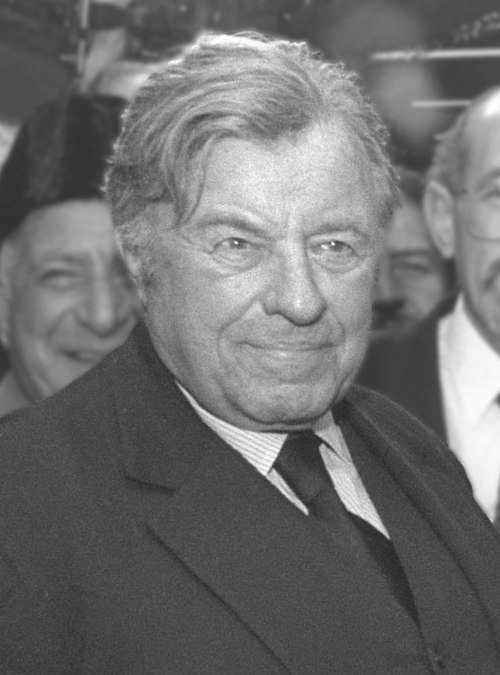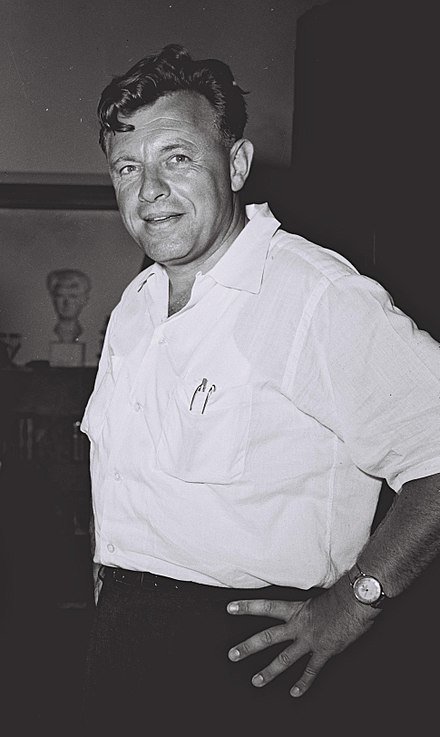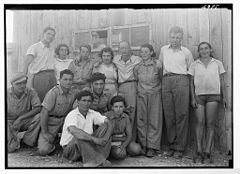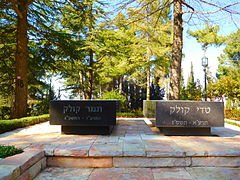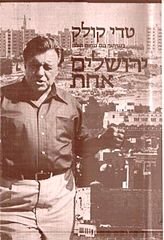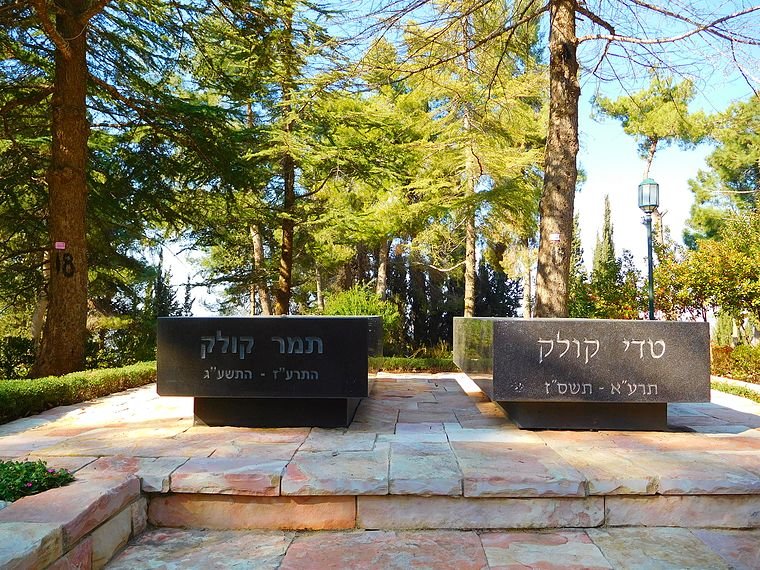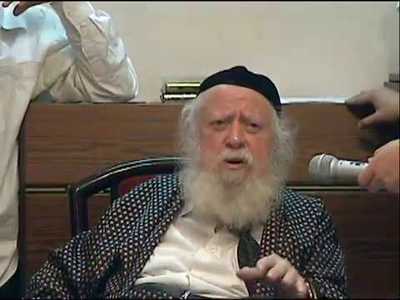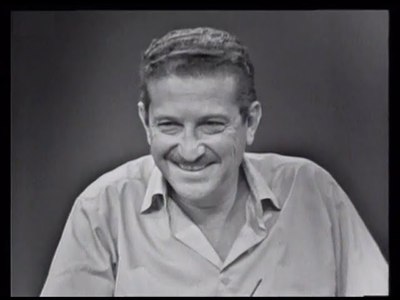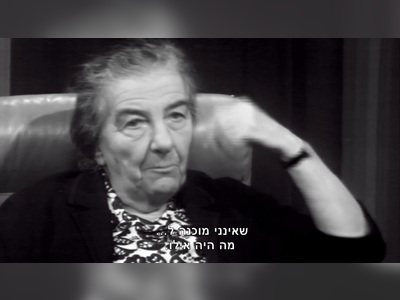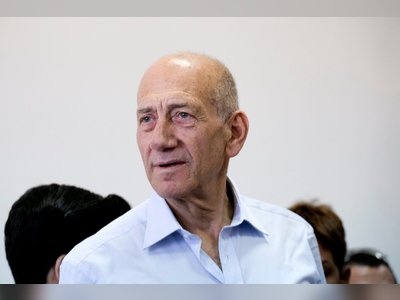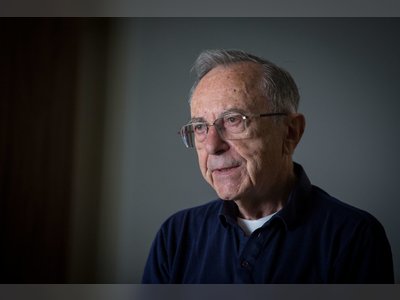Teddy Kollek: The Longtime Mayor of Jerusalem
Theodore (Teddy) Kollek (May 27, 1911 – January 2, 2007) was the mayor of Jerusalem for 28 years, serving from 1965 to 1993. He was awarded the Israel Prize for his exceptional contributions to the country.
Early Life
Theodore (Teddy) Kollek was born in the small town of Nagyvázsony in the Veszprém region of Hungary on May 27, 1911. His parents, Gerta (Rachel) née Fleischer and Alfred (Avraham), named him Theodore, but he became known as Teddy. Later in life, he decided to stick with this nickname despite its foreign sound. He discovered that during the time of the Second Temple, there was a northern gate on the Temple Mount called the "Sha'ar Teddy" (Gate of Teddy), as mentioned in Mishnah Middot, Chapter 1, Mishnah 3.
In 1918, the Kollek family moved to Vienna, Austria, where his father worked as a manager at Rothschild Bank.
In the early 1920s, Teddy was active in the youth movement "Tchelet Lavan" in Vienna. Starting in 1931, he became involved with the "Hahalutz" movement in Czechoslovakia, Germany, and England.
Teddy Kollek arrived in British Mandate Palestine on December 30, 1935, aboard the ship "Gerusalemme," part of the Austrian society "Verein Tröstino" whose ships operated on the Trieste–Jaffa route. In 1937, he joined the founding core group of Kibbutz Ein Gev. That same year, he married Tamar Kollek (née Anna Helena), the daughter of Rabbi and Talmudic scholar Arthur Zecharia Schwartz, who was born in Vienna. From 1938, Teddy worked on missions for "Hahalutz" in England and succeeded in rescuing approximately 3,000 young Jews from concentration camps and transporting them to England.
In the spring of 1939, he visited the Vienna headquarters of Adolf Eichmann, which was located in the Rothschild family palace. Eichmann approved Kollek's request to allow young Jews who had entry permits to England to leave Austria. During World War II, Teddy Kollek held significant roles in the political department of the Jewish Agency. This included liaising with key figures in the Nazi regime to save Jews and attempt to bring them to Palestine.
In 1944, he was appointed to head the "Special Tasks Department" in the Jewish Agency. In this capacity, Kollek, during the "Saison," provided extensive information to the British as an agent of the British intelligence organization MI5, about the Irgun and Lehi, to serve the British Mandate authorities in their fight against Jewish underground movements. (Reuben Shiloah had performed this task before Kollek, and Zeev Sherf continued afterward.)
In 1947, Teddy Kollek led a delegation on behalf of the Haganah to the United States, with the mission to purchase and transport weapons intended for use against the anticipated Arab invasion following the end of the Mandate and the declaration of Israel's independence. As part of this mission, he was also responsible for recruiting volunteers.
After Israel's establishment, from 1950 to 1952, Teddy served as an emissary in Washington, where he fostered the initial connections between the American Jewish and Israeli communities. Following his brief stint in this role, he was called back to Israel by Prime Minister David Ben-Gurion, a close associate, and appointed Director-General of the Prime Minister's Office.
He held this position from 1952 until 1964, during which he also dedicated himself to founding and managing the Israel Museum in Jerusalem. Additionally, he served as the head of the government's tourism department. During Adolf Eichmann's trial in Israel, Teddy Kollek was responsible for the technical preparations of the trial.
Mayor of Jerusalem
In 1965, Teddy Kollek joined David Ben-Gurion in founding the Rafi Party (Ahdut HaAvoda). In the same year, he was elected mayor of Jerusalem on behalf of the Rafi Party, after forming a coalition with right-wing and religious parties. In 1967, following the Six-Day War and the reunification of Jerusalem, he became the mayor of the united city. The city's municipal boundaries and population doubled after the reunification.
In the 1969 municipal elections, Kollek headed the Alignment list, and in later years, he formed a list called "One Jerusalem." His list gained significant support in the October 1983 elections, securing 17 seats in the city council compared to Likud's 4 seats. Kollek received 63% of the votes, while his opponent, Shlomo Tousia Cohen of Likud, received only 19%. Teddy Kollek served as mayor for 28 years.
After the city's unification, Kollek embarked on an ambitious program to develop the city culturally. He established institutions and educational centers while maintaining green spaces in the city. He also preserved old neighborhoods and important buildings, with a few exceptions, such as Nachlat Shiva neighborhood, the Omeriah Compound, and the Tiferet Yisrael Synagogue.
In the 1993 municipal elections, Kollek decided not to run for another term due to his age (82), but he eventually chose to run after public pressure. However, he lost the mayoral race to Ehud Olmert, partly due to the low turnout of Arab voters, the low voter turnout among secular Jewish voters, and the last-minute withdrawal of the ultra-Orthodox candidate, Meir Porush, who called on his supporters to vote for Olmert.
Teddy Kollek was married to Tamar (1917–2013), and they had two children: the artist Asnat and the filmmaker Amos Kollek.
Teddy Kollek passed away in 2007 at the age of 95 at his residence in Jerusalem. His funeral was conducted as a state ceremony, and he was buried in the Great Leaders of the Nation section on Mount Herzl.
Public Critique
Despite Teddy Kollek's impressive contributions to the development of Jerusalem, criticisms were raised about his "elitist" approach to city development, particularly in East Jerusalem. He invested relatively little in Arab neighborhoods and largely ignored the Muslim Quarter. Kollek argued that this disparity was not due to his personal decisions but was a direct result of the fact that the majority of contributors to the "Jerusalem Foundation," his fundraising organization, were Jewish, and they insisted that their money be allocated exclusively for the benefit of the Jewish population. He also cited differences in the municipal budget allocations between population groups.
Critics also pointed out that the reason for his election had much to do with the fact that the Arab residents of Jerusalem regularly boycotted municipal elections, rendering their influence on the mayor's election minimal.
Another aspect of criticism was related to Kollek's grandiose development plans in various areas of Jerusalem, which involved demolishing ancient buildings. Some plans were implemented, while others were shelved. One such plan aimed to demolish the Nachlat Shiva neighborhood in the city center and erect multi-story buildings in its place. This plan was later abandoned, and the neighborhood remains a pedestrian zone with preserved historic buildings.
Overall, Teddy Kollek is remembered as a significant figure in the history of Jerusalem, and his long tenure as mayor saw both tremendous development and enduring challenges in the city.
- טדי קולקhe.wikipedia.org
